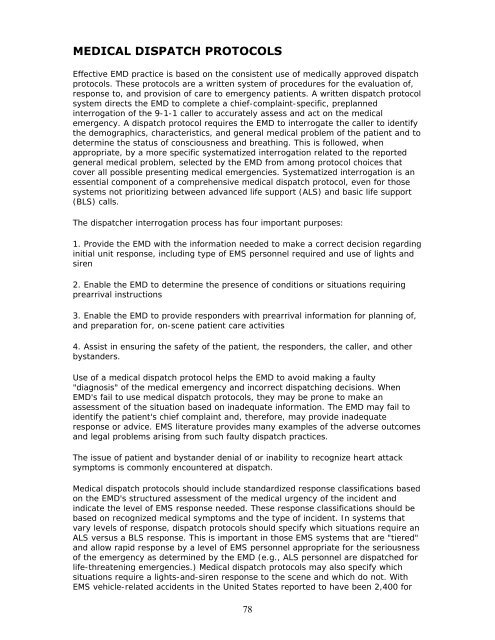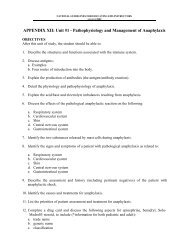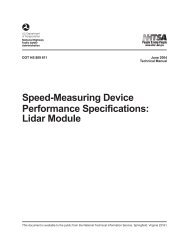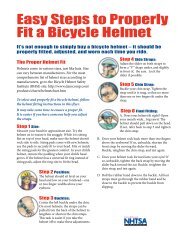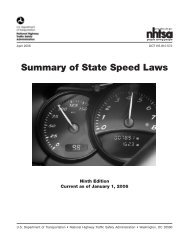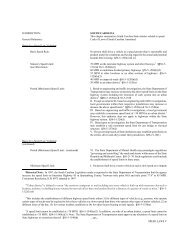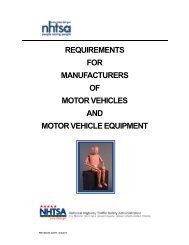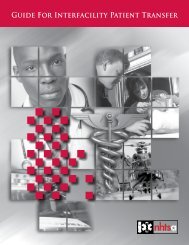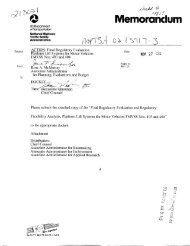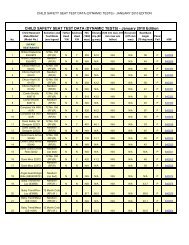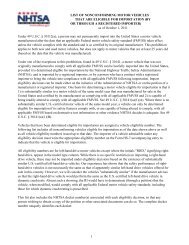Standard Practice for Emergency Medical Dispatch ... - NHTSA
Standard Practice for Emergency Medical Dispatch ... - NHTSA
Standard Practice for Emergency Medical Dispatch ... - NHTSA
You also want an ePaper? Increase the reach of your titles
YUMPU automatically turns print PDFs into web optimized ePapers that Google loves.
MEDICAL DISPATCH PROTOCOLS<br />
Effective EMD practice is based on the consistent use of medically approved dispatch<br />
protocols. These protocols are a written system of procedures <strong>for</strong> the evaluation of,<br />
response to, and provision of care to emergency patients. A written dispatch protocol<br />
system directs the EMD to complete a chief-complaint-specific, preplanned<br />
interrogation of the 9-1-1 caller to accurately assess and act on the medical<br />
emergency. A dispatch protocol requires the EMD to interrogate the caller to identify<br />
the demographics, characteristics, and general medical problem of the patient and to<br />
determine the status of consciousness and breathing. This is followed, when<br />
appropriate, by a more specific systematized interrogation related to the reported<br />
general medical problem, selected by the EMD from among protocol choices that<br />
cover all possible presenting medical emergencies. Systematized interrogation is an<br />
essential component of a comprehensive medical dispatch protocol, even <strong>for</strong> those<br />
systems not prioritizing between advanced life support (ALS) and basic life support<br />
(BLS) calls.<br />
The dispatcher interrogation process has four important purposes:<br />
1. Provide the EMD with the in<strong>for</strong>mation needed to make a correct decision regarding<br />
initial unit response, including type of EMS personnel required and use of lights and<br />
siren<br />
2. Enable the EMD to determine the presence of conditions or situations requiring<br />
prearrival instructions<br />
3. Enable the EMD to provide responders with prearrival in<strong>for</strong>mation <strong>for</strong> planning of,<br />
and preparation <strong>for</strong>, on-scene patient care activities<br />
4. Assist in ensuring the safety of the patient, the responders, the caller, and other<br />
bystanders.<br />
Use of a medical dispatch protocol helps the EMD to avoid making a faulty<br />
"diagnosis" of the medical emergency and incorrect dispatching decisions. When<br />
EMD's fail to use medical dispatch protocols, they may be prone to make an<br />
assessment of the situation based on inadequate in<strong>for</strong>mation. The EMD may fail to<br />
identify the patient's chief complaint and, there<strong>for</strong>e, may provide inadequate<br />
response or advice. EMS literature provides many examples of the adverse outcomes<br />
and legal problems arising from such faulty dispatch practices.<br />
The issue of patient and bystander denial of or inability to recognize heart attack<br />
symptoms is commonly encountered at dispatch.<br />
<strong>Medical</strong> dispatch protocols should include standardized response classifications based<br />
on the EMD's structured assessment of the medical urgency of the incident and<br />
indicate the level of EMS response needed. These response classifications should be<br />
based on recognized medical symptoms and the type of incident. In systems that<br />
vary levels of response, dispatch protocols should specify which situations require an<br />
ALS versus a BLS response. This is important in those EMS systems that are "tiered"<br />
and allow rapid response by a level of EMS personnel appropriate <strong>for</strong> the seriousness<br />
of the emergency as determined by the EMD (e.g., ALS personnel are dispatched <strong>for</strong><br />
life-threatening emergencies.) <strong>Medical</strong> dispatch protocols may also specify which<br />
situations require a lights-and-siren response to the scene and which do not. With<br />
EMS vehicle-related accidents in the United States reported to have been 2,400 <strong>for</strong><br />
78


